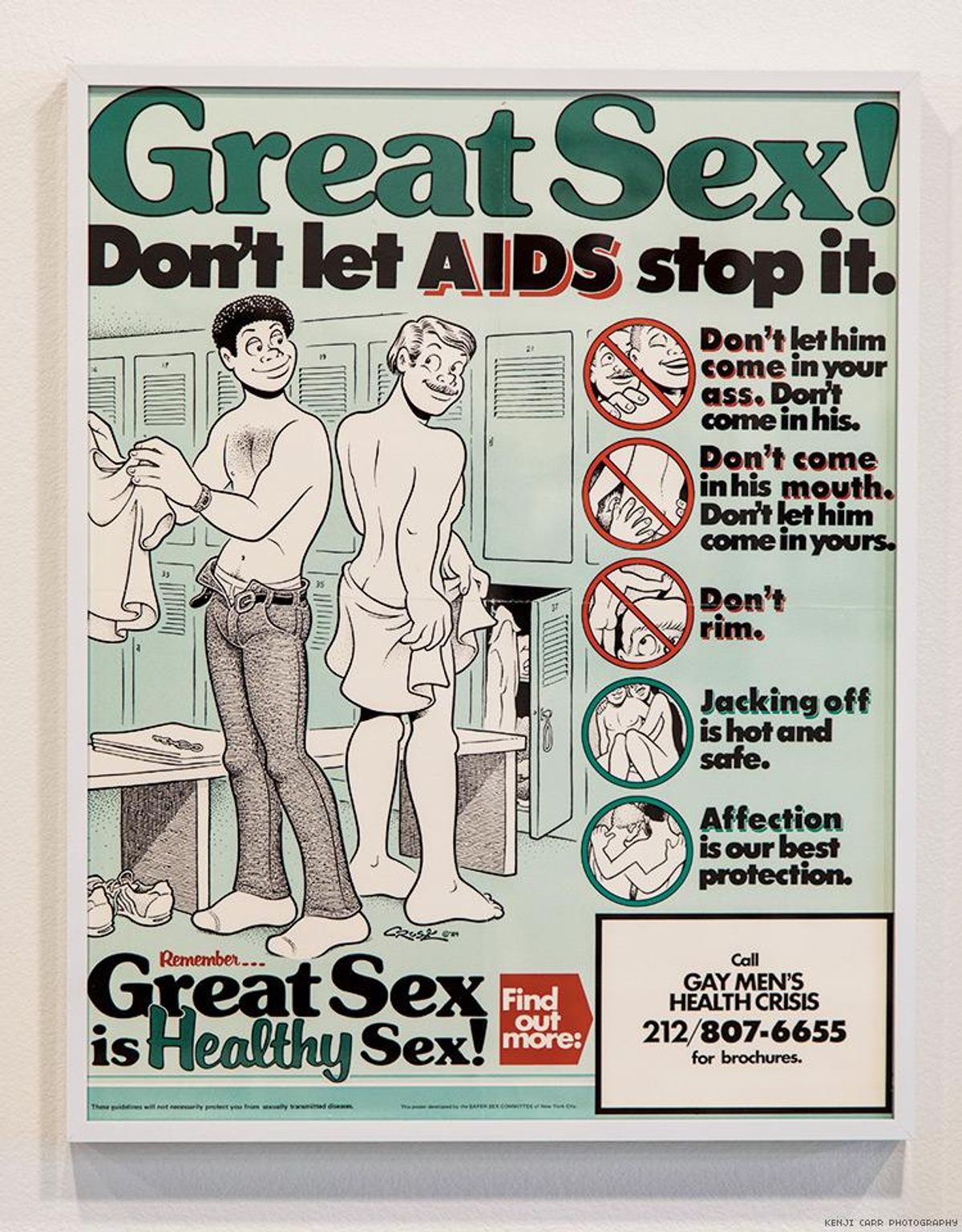Current Issue
Safer Sex Imagery in the Time of AIDS

An exhibit reveals the rich history of LGBT safer sex materials -- many explicit -- created in the '80s and '90s as a response to the epidemic.
May 17 2018 3:37 PM EST
May 31 2023 8:30 PM EST
By continuing to use our site, you agree to our Private Policy and Terms of Use.

An exhibit reveals the rich history of LGBT safer sex materials -- many explicit -- created in the '80s and '90s as a response to the epidemic.
As soon as I walked into Lost and Found: Safer Sex Activism I couldn't help but notice an image with black men. As a black man living with HIV, I am troubled by narratives that fail to include the vast contributions and experiences of black and Latino populations who have carried the heaviest burdens of HIV and AIDS.
I'd been expecting to see a bunch of images of smiling white guys in Lost and Found, an exhibit recently at ONE Gallery in West Hollywood, Calif., but I was pleasantly surprised. The show features nearly 100 groundbreaking and iconic safer sex activism posters, comic strips, ads, photos, and other artwork by activist groups, including Gran Fury, Color Coded, Gay Men of Color Consortium, Gay Men's Health Crisis, and the 1990s Oakland-based AIDS Project of the East Bay.
(RELATED: The Sex-Positive, and Sexy, HIV Awareness Campaigns of the '80s)
The exhibit includes some rare items that have never been displayed publicly before. It is presented by the ONE Archives Foundation (OneArchives.org), which maintains the largest repository of LGBT materials in the world, at the University of Southern California.
Dr. Neal Baer, a consultant for Lost and Found, says, "This show puts the microscope on historical documents and contemporary efforts that illuminate an urgency that still exists." Indeed, in Los Angeles County, 40 percent of African-American, 20 percent of Latino, and 10 percent of white gay and bisexual men are HIV-positive.
In an environment where HIV still carries a tremendous amount of guilt, shame, and stigma, these archives are proof that safer sex messages can still be playful, funny, informative, and most of all, inclusive. I recently asked two friends for their thoughts on the importance of such campaigns.
"My first instinct is to say that safe sex campaigns are not vital," Corey Saucier, an L.A. artist and writer, replied. "But that's because they are rarely relevant or relatable. If they don't represent the people who are actually affected, doing the things that they actually do, they will have no effect. We will continue with that generic image of gorgeous white men with perfect teeth preaching about condom use and abstinence; and they will continue to fall on deaf ears. [We need to] tell better stories."
"We're in a sexual revolution," noted Aaron Celious, Ph.D., director of research and strategy at the Maroon Society, a consulting firm. "People can find a new sexual partner every day of the week using a cell phone. So now, more than ever, we need greater effort spent educating communities on ways to have safer sex."
Walking through the Lost and Found exhibit I noticed safer sex messages from when I first started going out, many of which were sexually graphic. I wondered why it changed. The art and imagery on display are not images you would see today for any sex-ed campaign. In fact, it feels like there's no such thing as sexual education campaigns today. The images from the archives are of real people doing real life things. I guess back then they were telling much better stories.
"Given the current political climate, we are seeing an elevated interest in how the LGBTQ community responded to oppression in the past," said Jennifer Gregg, executive director of the ONE Archives Foundation, adding that the organization hopes their exhibits "will inspire younger generations to examine ongoing disparities in sexual health equality and serve as a springboard for continued activism."
Evans Frantz, the exhibit's co-curator, said that he hopes it sheds new light on how activists, artists, and community educators in the 1980s and 1990s galvanized public awareness about the crisis and forms of protection through education and empowerment. For many of the projects, organizations, and materials highlighted in Lost and Found, these efforts were grassroots and DIY.
Distributed with accessible information, the posters present safer sex messaging that is both empowering and sexy.
Today, for those living with and without HIV, there are numerous options available for prevention, protection, and wellness -- including PrEP and antiretroviral drugs that protect those who take them from acquiring the virus or transmitting it. However, critically, Lost and Found shows that the fight in the 1980s and '90s to protect one another is a fight that has not ended.
Want more breaking equality news & trending entertainment stories?
Check out our NEW 24/7 streaming service: the Advocate Channel!
Download the Advocate Channel App for your mobile phone and your favorite streaming device!